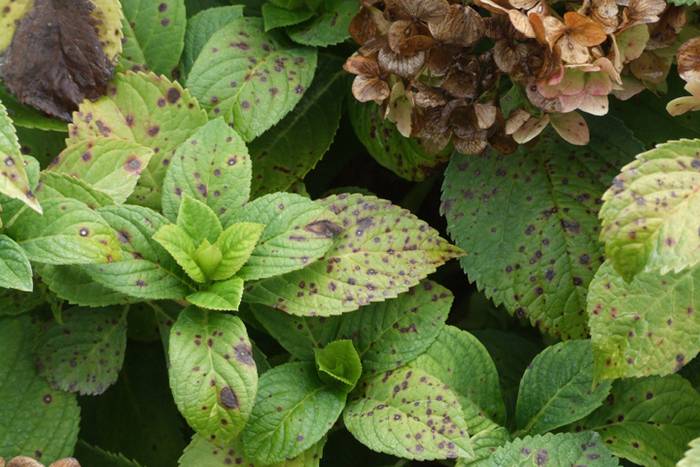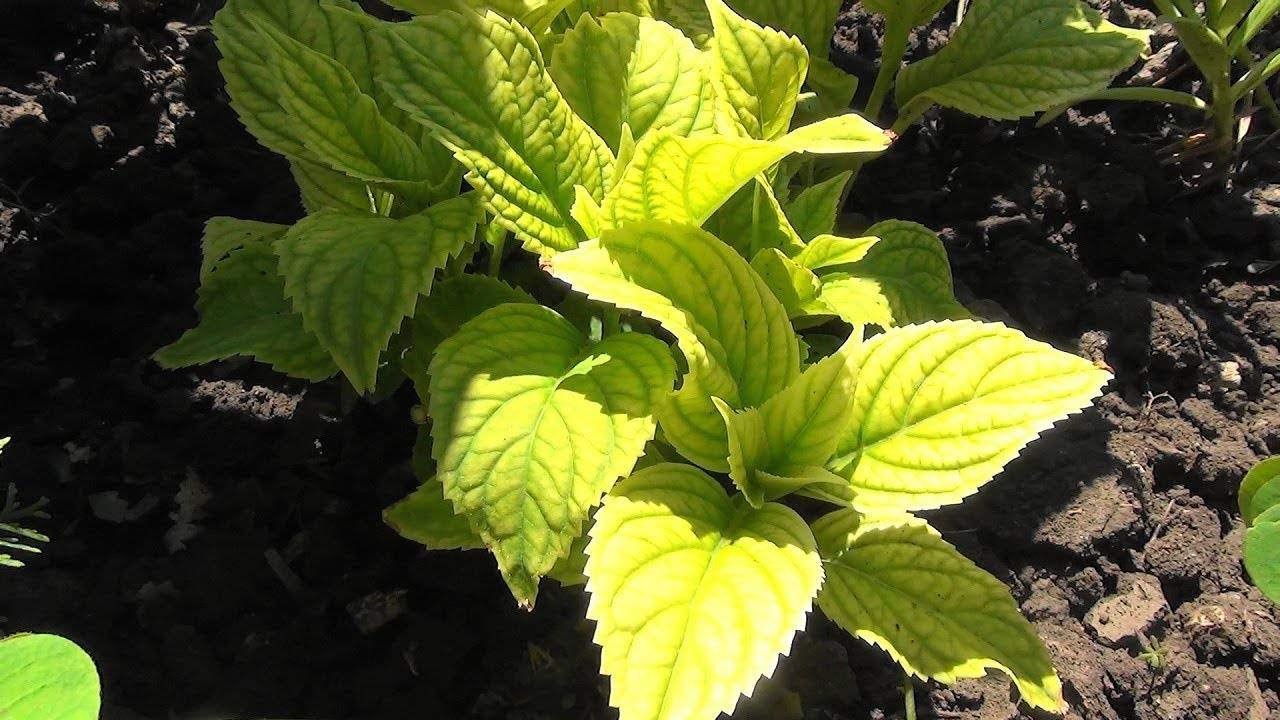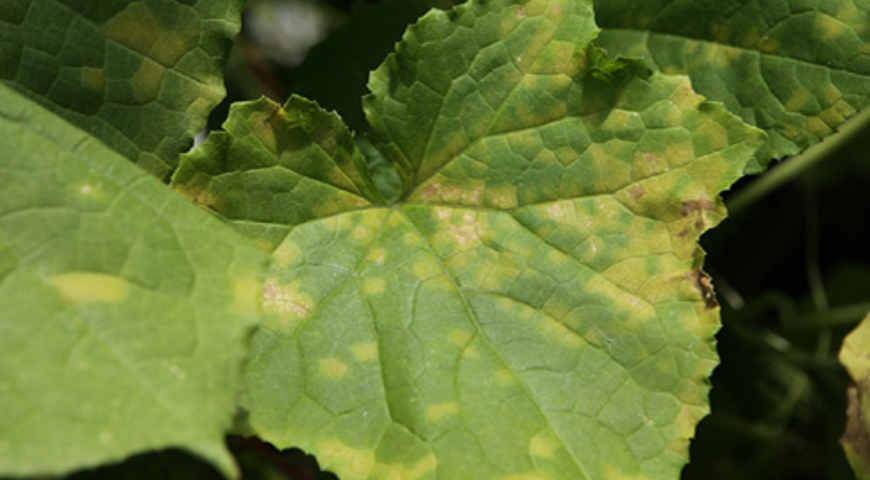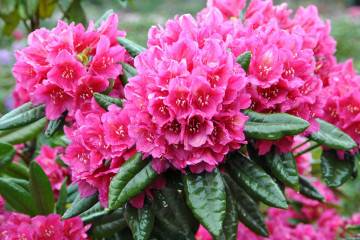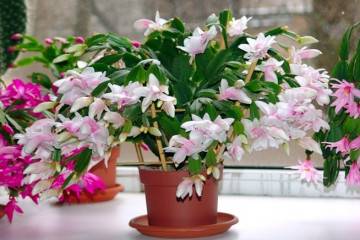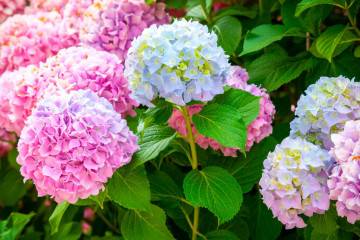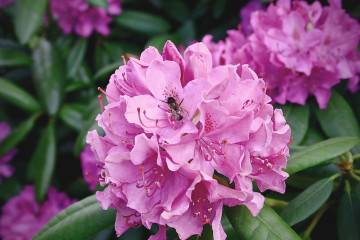Why do hydrangea leaves curl and wrap in a boat
Content:
Hydrangea is a popular flower, the varieties of which can be found on the windowsill in the house or in the flower bed in the garden. The plant is considered unpretentious, although it imposes certain conditions on the composition of the soil and watering. But even with proper care, problems can arise. A clear manifestation of these are the twisted leaves of the hydrangea. By the nature of the deformation, you can determine the cause and take measures to eliminate the problem.
Why do hydrangea leaves curl
It is impossible to unequivocally determine why the leaves of the hydrangea curl, since there may be several options. Leaf deformation most often occurs due to metabolic disorders in the aboveground or underground part of the plant. A few more reasons are the exact diseases of the plant.
Diseases of garden hydrangea caused by metabolic disorders
Often, if the leaves of the hydrangea curl around the edges, then there are problems with the metabolism inside the stems and leaves. The most common disease of this type is chlorosis.
Chlorosis
The paniculate variety is often subject to chlorosis. This disease is manifested by the fact that the leaf plate begins to brighten, but the color of the veins remains. As a result of top dressing, iron begins to accumulate in the soil, which is not further absorbed by the bush.
Further, the plate is deformed, so it becomes clear why the leaves of the hydrangea are folded. To avoid such troubles, you need to do the following:
- spray the aerial part of the plant with special preparations, which include iron;
- water the flower only with settled water at room temperature;
- pour a solution of potassium nitrate (40 g), copper sulfate (40 g) per 10 liters of water under the bush.
Peronosporosis (downy mildew)
If the color of the aboveground part does not change, but the plate is deformed, then the reason why the leaves of the hydrangea are twisted is peronosporosis. In the everyday life of flower growers, it is called downy mildew.
Peronosporosis is a fungal disease that occurs as a result of waterlogging of the air. An additional condition is a high air temperature - 18-20 ° C. Oily stains form on the plates, which then turn black, which leads to deformation of the plate.
To get rid of the problem, you need to prepare a solution of 10 liters of water, 150 g of laundry soap and 1 tbsp. spoons of copper sulfate. Spray the above-ground part with the mixture.
Fungal diseases of hydrangea
Any large-leaved variety is especially susceptible to fungal diseases. Therefore, if the leaves of the hydrangea are curled up, then the reason may be:
- gray rot (Botrytis cinerea);
- peronosporosis;
- white rot;
- septoria;
- rust.
In each case, at first, the brown leaf begins to curl and gradually die off, harming the entire plant. If the infected leaf is not removed in time, then the bush may completely die due to infection of the root system.
Hydrangea Viral Ring Spot
Hydrangea viral ring spot (Mycosphaerella brassicicola) is the most common problem faced by growers. How does the disease manifest itself:
- gray spots of necrosis appear on the plates;
- over time, the affected areas begin to deform;
- after some time, the leaves are completely wrapped.
As a result, the bush does not bloom, the buds dry out immediately after formation or do not appear at all. A treatment for Mycosphaerella brassicicola has not yet been developed, therefore, before buying or planting a seedling, you need to pay attention to its aerial part.
Flower cancer: how to treat the disease
Recently, a disease such as hydrangea cancer has appeared. The disease was brought from Europe along with the affected planting material. Those specimens that were mechanically damaged and in contact with problem plants can become infected.
Cancer manifests itself as follows:
- black spots appear on the top of the plates;
- at the bottom, peculiar ulcers are noticeable;
- over time, leaves roll and die off completely.
How to protect your garden hydrangea from disease and pests
In order for the flower to be protected from parasites and diseases, you need to carefully monitor the appearance of the plant, do sanitary and rejuvenating pruning. Additionally, you need to treat the bushes with special solutions and mixtures that will scare off diseases and pests.
Disease prevention
Both indoor and outdoor specimens can succumb to various diseases. In order not to injure the flower once again, it is better to carry out preventive measures:
- initially it is worth choosing healthy and strong seedlings;
- tree varieties need to be additionally treated with insect control agents under the bark;
- for a garden hydrangea, you must initially choose the correct planting site, where a light partial shade should be present;
- timely watering and loosening of the soil are needed;
- make constant top dressing using the right fertilizer options;
- to make the flower invulnerable to diseases, the aerial part should be periodically treated with special chemicals.
Any type or variety of hydrangea can become infected with an infectious or fungal disease. As a result, the leaves on the bush change color and over time dry, curling, and then fall off. To avoid this, it is necessary to take measures for treatment, to carry out prevention.
